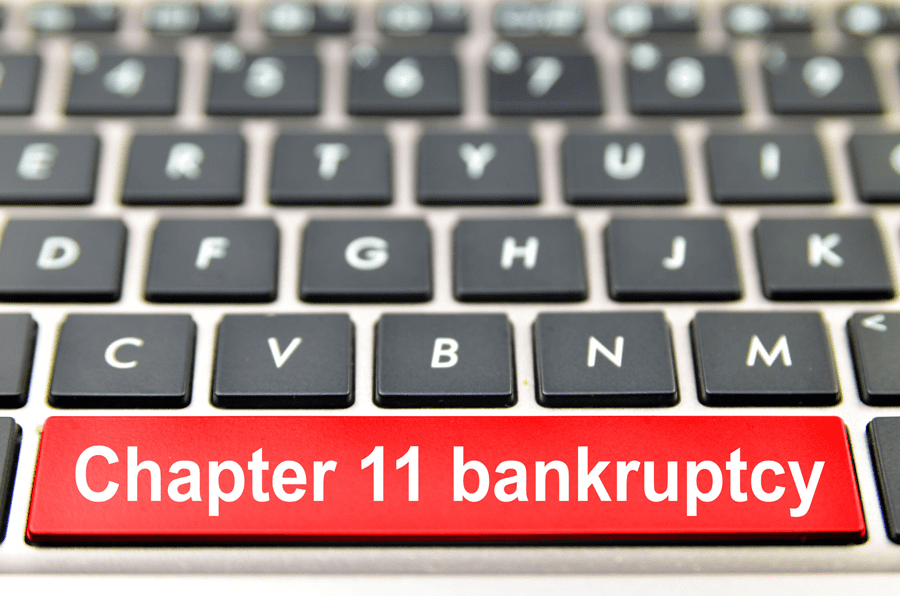With the oil price dipping into negative numbers, there is a serious question about whether oil and gas companies can weather the storm of oversupply and eviscerated demand. Goods and services providers to the oil and gas sector may already be concerned about counterparties declaring bankruptcy as a result of slow or even non-payment, and may find themselves holding unsecured debt. Bankruptcy moves fast, so get ready now.
Typically, when a bankruptcy is filed, unsecured creditors identified in the bankruptcy petition filed by the debtor will receive a notice of bankruptcy from the federal court where the bankruptcy is pending. Recipients of the notice of bankruptcy or other unidentified creditors should file a proof of claim in the bankruptcy court by the specified deadline.
Early in the bankruptcy, the unsecured creditors may be asked to consider serving on the unsecured creditors’ committee.
Key points:
- Committee selects legal counsel to recover debt;
- Legal counsel oversees the day-to-day management of the case;
- All committee expenses, including legal fees, are the responsibility of the bankruptcy estate.
One of the many unfortunate realities of the current economic situation is the likelihood of a sharp uptick in bankruptcies in the oil and gas industry. As more mid-size and large businesses begin to file Chapter 11 bankruptcy, you will likely hear more about unsecured creditor committees. Guided by experienced legal counsel, these groups are critical for businesses seeking to recover what they are owed from the bankrupt company.
These committees are assembled by the United States Trustee program, which is overseen by the Department of Justice. The trustee generally will reach out to the largest unsecured creditors of the bankrupt company to gauge their interest in serving on an unsecured creditors committee. However, because the committee must be representative of the entire class of unsecured creditors, the U.S. Trustee may invite other unsecured creditors with smaller claims or distinct interests to participate in the initial meeting to form the committee. When you express a willingness to serve on the committee, you’re more likely to be invited to participate in the meeting.
Typically, the committee is comprised of representatives from the seven companies with the largest unsecured debt claims against the bankrupt company. There must be at least three unsecured creditors willing to serve in order to form a committee.
Committee members typically only meet a few times during the course of the bankruptcy and usually by teleconference. Because committee members are obliged to keep the rest of the unsecured creditors informed, they have the advantage of being the first to know. They’re the first to receive status reports from the committee’s engaged professionals with the most up-to-date information about the case development, strategic next steps, and the potential distribution of funds to be received by the unsecured creditors.
The Bankruptcy Code vests the committee with a broad range of powers that ensures the committee significant influence of the administration of the bankruptcy case, and the formulation of any restructuring plan. For example, the committee can investigate the debtor’s pre- and post-petition acts, conduct, assets, liabilities, and financial condition. The committee has an absolute right to appear and be heard in any matter brought before the bankruptcy court, and to intervene in any lawsuit involving the debtor filed in the bankruptcy court. The committee is the watchdog for the interests of the unsecured creditors during the pendency of the bankruptcy.
Committee members have a “fiduciary” obligation to the class of unsecured creditors that they represent. Members need to be able to put the needs of the wider group before their own specific interests. That does not mean that members cannot advocate for their own claims, but it does mean that members should not use their membership on the committee to obtain an advantage over other unsecured creditors.
If given this opportunity, it is most likely in your best interest to serve. Once the committee is convened by the U.S. Trustee, a majority of committee members will select one or more attorneys, accountants or other agents to represent all unsecured creditors at a scheduled meeting. This is your opportunity to advocate for an attorney with experience you trust. That experience is critical for recovering as much of what you are owed as possible by defending your claims and challenging others.
The committee’s lawyer in conjunction with the committee’s other engaged professionals oversees the day-to-day business of drafting pleadings, appears in court, negotiates on behalf of the committee, and keeps committee members informed. The bankruptcy estate pays the committee’s expenses, including legal fees. Participating in the committee should cost you nothing.
The unsecured creditors committee with the help of counsel reviews claims filed in the bankruptcy to determine whether to challenge the validity of any alleged debt. The committee challenges disputable claims to maximize the pool of money left over for distribution to the unsecured creditors. There are times when through warrants or other mechanisms, you can recover significantly more than pennies on the dollar on behalf of the committee.
For example, in 2014 a secured creditor offered to buy hybrid car manufacturer Fisker Automotive out of bankruptcy. Through the deal, the company’s unsecured creditors would have received a small fraction of what they were owed. The unsecured creditor committee fought the proposal and successfully argued for a competitive bidding process. Wanxiang Group bought the company with a winning bid of nearly $150 million, creating a pool of more than $40 million for the unsecured creditors.
The Fisker story is just one example but illustrates how important these committees are, particularly now. The experience of being involved in an unsecured creditor committee will prove invaluable when you put it to use on the next committee – a very likely scenario given the number of bankruptcies that are expected.
Liz Klingensmith is a veteran litigator serving the energy sector. Based in Womble Bond Dickinson’s Houston office, Klingensmith represents clients involved in complex disputes including representing unsecured creditors’ committees.
Tony Guerino is a veteran litigator serving the energy sector. Based in Womble Bond Dickinson’s Houston office, Guerino represents clients involved in complex disputes including representing unsecured creditors’ committees.









